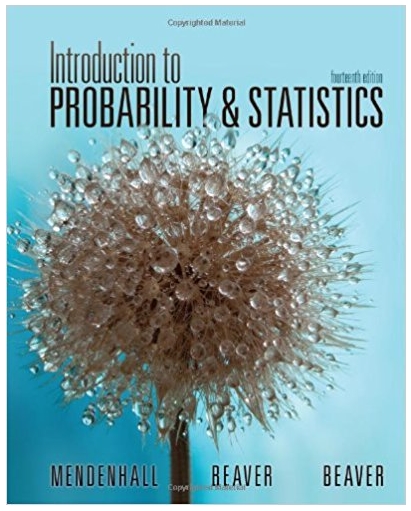Question
2. An experiment was conducted to determine the effects of various pesticides on the yield of fruit from three different varieties (B1, B2, B3) of
2. An experiment was conducted to determine the effects of various pesticides on the
yield of fruit from three different varieties (B1, B2, B3) of lemon tree. The pesticide
conditions utilized in the experiment were A1=Control (no pesticide), A2=Chemical
X, A3=Chemical Y, A4=Mixture of chemicals X and Y. The lemon varieties used
were B1=Standard variety (the variety that is currently most commonly grown),
B2=New genetically engineered variety 1, and B3=New genetically engineered variety
2. Eight trees from each variety were randomly selected from an orchard. The
four levels of pesticide were then randomly assigned to two trees of each variety and
pesticide applications were made. Yields of fruit, in bushels per tree, were obtained
after the test period. The data appear below:
Pesticide
Variety A1 A2 A3 A4
B1 49, 39 50, 55 43, 38 53, 48
B2 55, 41 67, 58 53, 42 80, 73
B3 66, 68 85, 92 69, 62 89, 99
(a) Write the appropriate two-way ANOVA model for analyzing these data. Perform
the analysis of variance corresponding to this model and draw conclusions
about the effects.
(b) Construct and test a set of orthogonal contrasts to address the following questions
about the marginal effects of the pesticide treatments:
i. Does using chemical X increase the mean yield?
ii. Does using chemical Y increase the mean yield?
iii. Do chemicals X and Y interact, so that the effect of using chemical X
differs when chemical Y is used from its effect when chemical Y is not
used?
1(c) Construct and test contrasts in the marginal variety means to address the
following questions:
i. Does genetically engineered variety 1 produce higher mean yields than the
standard variety?
ii. Does genetically engineered variety 2 produce higher mean yields than the
standard variety?
(d) Use the contrasts that you formed in parts (b) and (c) to form interaction
contrasts. (You should end up with 3 2 = 6 interaction contrasts.) Interpret
these contrasts (i.e., what questions do they address?). Test these interaction
contrasts as planned comparisons and state your conclusions.
(e) Were the contrasts in par (b) mutually orthogonal? How about the contrasts
in part (c)?
Step by Step Solution
There are 3 Steps involved in it
Step: 1

Get Instant Access to Expert-Tailored Solutions
See step-by-step solutions with expert insights and AI powered tools for academic success
Step: 2

Step: 3

Ace Your Homework with AI
Get the answers you need in no time with our AI-driven, step-by-step assistance
Get Started


